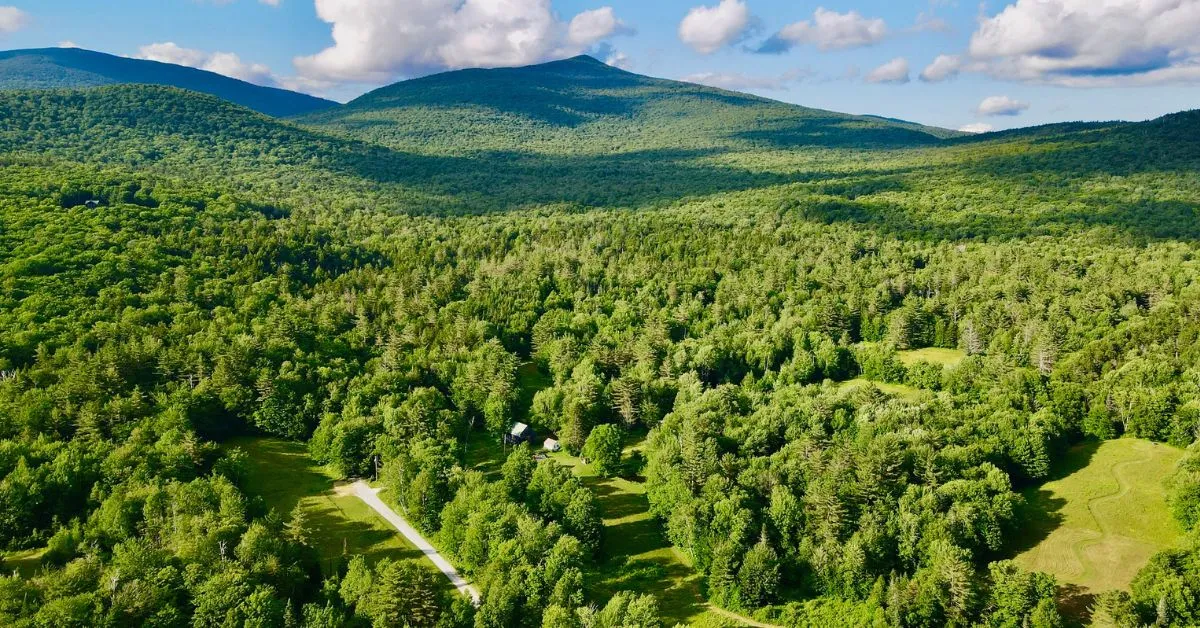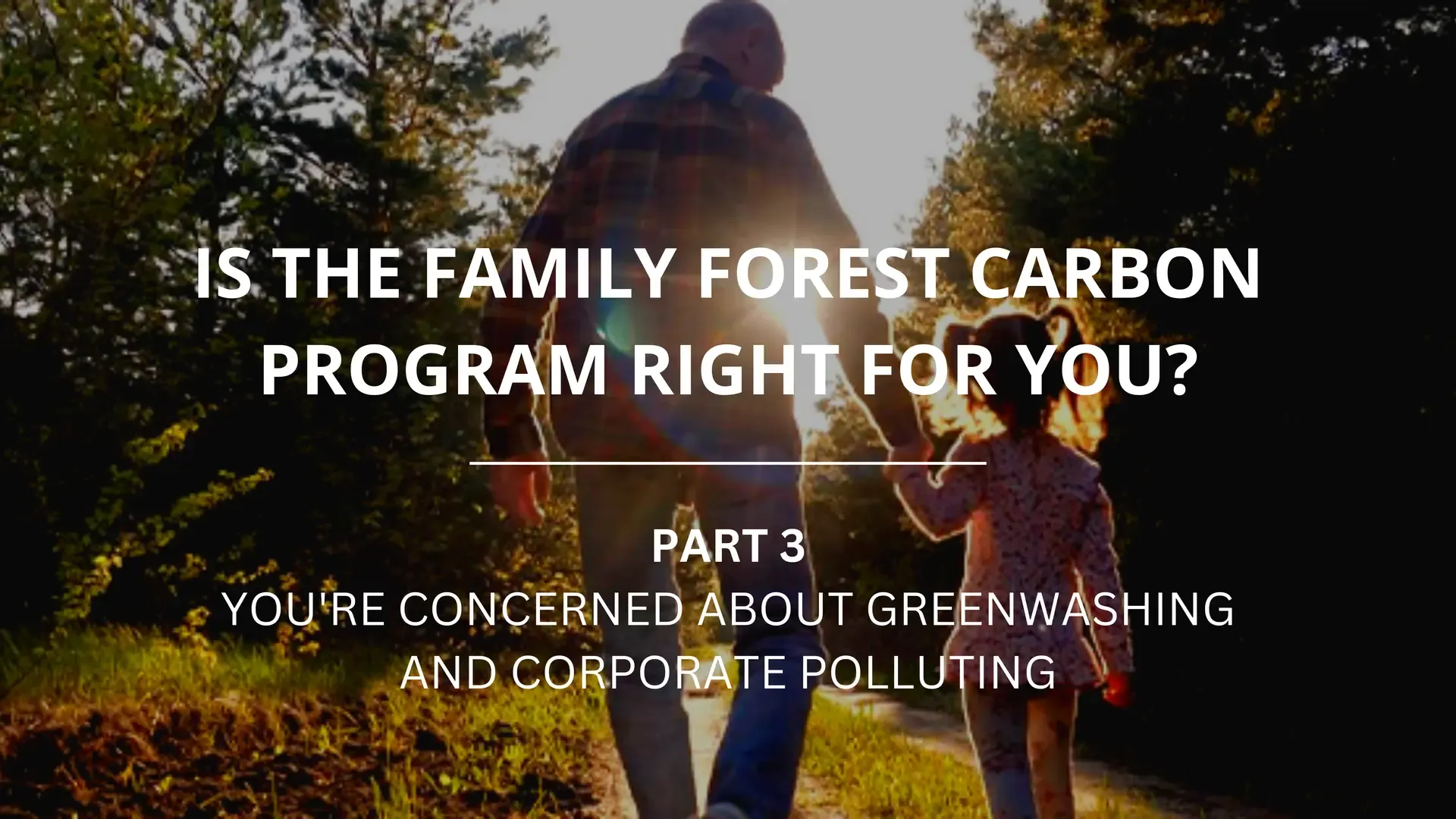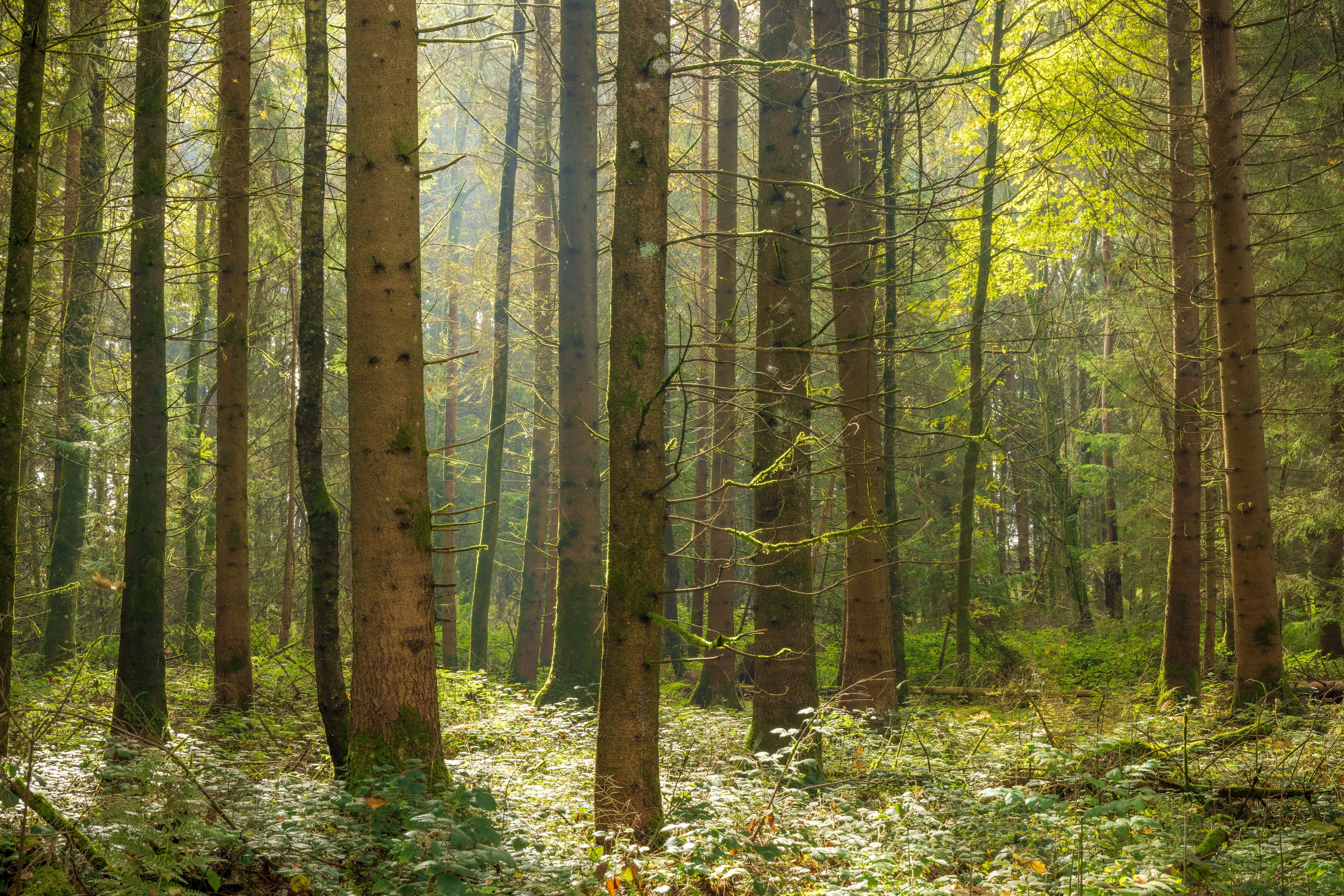Carbon Markets 101

Woodland trees store and sequester carbon that is purchased as a carbon credit.
Before you enroll in a carbon program like FFCP, it’s understandable that you would want to learn more about carbon markets, how they work, and whether they are legitimate.
Let’s start by demystifying the term “carbon markets.” Many landowners (and even some people who have been working in carbon markets for years) struggle with the idea that we are buying and selling something that seems intangible. After all, when we say we are selling “carbon," we’re not speaking literally. We don’t come to your property and extract a tonne of carbon, the element, put it in a box and ship it to a corporation. What we’re really selling is a claim—specifically, the claim that a tonne of carbon dioxide has been kept out of the atmosphere as a result of a specific action—in this case, a carbon program.
LEARN MORE NOW ABOUT HOW YOU MAY BENEFIT FROM THE FAMILY FOREST CARBON PROGRAM.
That is what a carbon credit is—the right to exclusively own this claim.
You can probably think of ways that you purchase other claims in your own life. Home insurance, for example, is a claim that says, “In the event of a catastrophic event that destroys my home, I will have the resources to rebuild and replace it.”
A hunting or fishing license, a membership to a gym, or a season ticket to watch a sports team are other examples where you are not purchasing something tangible, but rather a claim to get something tangible.

The Family Forest Carbon Program helps forest landowners participate in the carbon market.
In the case of carbon markets, organizations or individuals purchase carbon credits because the associated claims enable them to achieve their goals in a number of ways. Here are a few examples:
A company purchases carbon credits to compensate for the emissions it can’t yet eliminate. This helps the company prove to investors that it is on the path to “net-zero” and that there is low risk that it will be disrupted by global action on climate change. As a result, investor confidence rises, making the company's stock more desirable.
A government purchases carbon credits to cover its own emissions and help it meet its international commitments. Many of its international partners express gratitude and are more willing to support that country as a partner.
A person purchases carbon credits to offset the emissions from a vacation they plan to take in Hawaii. The knowledge that their vacation did not contribute incrementally to climate change is important to the traveler and helps them relax and enjoy their vacation.
As in all markets, the imbalance between supply and demand will influence the price of the credits. However, the carbon market has historically been different from traditional markets in a few ways.
Differences Between Carbon Markets and Traditional Markets
Transparency
First, when you hear the word “market,” it may conjure up ideas of a physical place—maybe a farmer’s market, or the floor of a stock exchange. But there really is no such place for the carbon market. Most transactions in this market are arranged online and one-on-one. It’s more like a “Carbon Craig’s List” in which suppliers advertise what they have to offer, buyers raise their hands if they’re interested, and then the two parties negotiate a deal, usually in private. However, that’s changing. In the next ten years the carbon market will likely come to resemble a more traditional market—but that change is not here yet.
Lack of Universal Standards
Second, unlike in other commodity markets, where there are clear rules about what does or does not count as a commodity (for example, think of an agricultural product), in the carbon market there are many types of “carbon credits” produced under a wide variety of rules which are all drastically different in the claims they represent.
This is because carbon markets have evolved slowly, over time, in response to national and international policies and corporate cultures, and without any single body overseeing their development. At the current moment, anyone can say they are selling carbon credits and come up with whatever mechanism they want to produce them. So long as buyers are willing to pay, some companies will offer a carbon project. This is changing rapidly as a huge number of stakeholders, including buyers, investors, landowners, project developers and governments, are demanding consistency from the markets, and a stable set of rules around how carbon credits are produced, measured, sold and used.
If you’ve ever come across criticisms of carbon markets, they probably relate to these two aspects —a lack of transparency and a lack of universal standards. Because carbon markets have historically lacked transparency, it’s been difficult for independent observers to have much trust in their operation. And because there has not been a set of agreed upon standards of what makes a “quality” carbon credit, a lot of really low-quality carbon credits have been produced and used, leading to very valid criticisms of the market overall. So, given the challenges with the markets, why are people still interested in them?
The Future of Carbon Markets
Policymakers, business leaders, climate scientists and others care about carbon markets because they are an incredibly powerful tool for dealing with the root cause of climate change.
Every institution on earth, whether they like it or not, is feeling the effects of the rising “costs” of carbon emissions. In that context, even though carbon markets are technically voluntary for most companies, in practice they are becoming mandatory because customers, investors and other stakeholders are increasingly demanding that companies take climate change into account in their long-term planning.
While carbon markets of the past were on the radar of relatively small teams in companies, today you would be hard pressed to find a company who isn’t putting time and energy into its climate strategies.
For these reasons, we think carbon markets are here to stay, and the vast majority of analyses out there agree with this assessment. Most expect the market to grow quickly in the coming years, so FFCP’s business plan includes projections of growth and passes the expected increases in financial incentives on to landowners.
As rules around carbon credits become standardized and the requirements for quality carbon credits increase, competitors will enter the market and the Family Forest Carbon Program will face market challenges like any other service program. The opportunity is vast, as are the risks. This is one reason we provide landowners with fixed incentives factoring in higher compensation that would result from the forecasted increase in demand, insulating you from any shocks to the market and to allowing you to make long-term plans with guaranteed annual income.
You can read more on our financial model in our post What We Pay You and Why It’s Not for Carbon.
As you consider which carbon program is the best fit for you, or whether to participate in carbon programs at all, remember you should think about not only what the market looks like today, but how it may change, and which partner is best positioned to adapt to and manage that changing environment.
THE FAMILY FOREST CARBON PROGRAM IS AVAILABLE TO LANDOWNERS WITH 30 ACRES OR MORE OF FORESTED LAND. VISIT FAMILYFORESTCARBON.ORG TO FIND OUT IF YOU’RE ELIGIBLE OR WHEN WE WILL BE AVAILABLE IN YOUR AREA.
Related Articles

April 14, 2023
What We Pay and Why It's Not For Carbon
The Family Forest Carbon Program is about more than monetary payments. The benefits include a better forest to enjoy for you and future generations. But how is the value of your payments determined, how are they funded and what are those payments for? Let's explore this unique program's financial benefits.

March 28, 2023
Is the Family Forest Carbon Program Right For You? Part 3: You’re Concerned About Greenwashing and Corporate Polluting
Simply put, "greenwashing" is the act of marketing something as being more environmentally friendly than it is. Even if the term itself is new to you, the idea has likely already crossed your mind while considering this or other carbon programs. In this post we look at what we are doing to mitigate greenwashing, and how we ensure we're producing credits that meet the highest standards of integrity.

December 4, 2025
Forest Carbon Project Issued First Ever Credits
Conservation organizations the American Forest Foundation (AFF) and The Nature Conservancy (TNC) announced today the issuance of improved forest management (IFM) carbon credits to the Family Forest Carbon Program (FFCP) from standards setter Verra under its Verified Carbon Standard (VCS) Program. This marks the first issuance of credits produced using Verra’s VM0045 improved forest management (IFM) methodology, which was co-developed by Verra, AFF, TNC, and TerraCarbon.